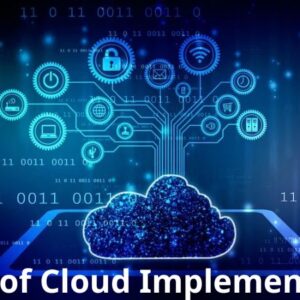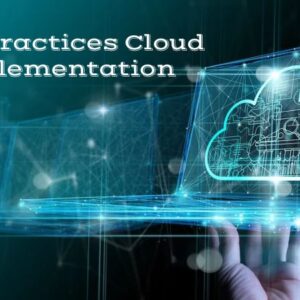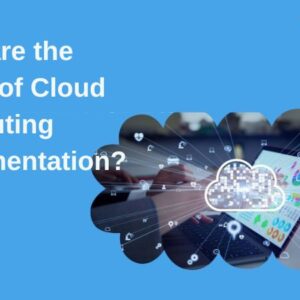Databases are essential to today’s technological world, providing effective ways to store and access data when needed. With the growth of cloud computing, many organizations have shifted to using a cloud database—a form of distributed storage where your data is replicated across multiple independent systems in the same network.
Cloud databases offer several advantages that make them highly appealing to businesses. However, some challenges are associated with moving information offsite into such systems. In this post, we’ll provide an overview of cloud databases, giving you all the tools necessary to decide if a cloud database meets the needs of your modern business.
What is a cloud database?
A cloud database is a database that is hosted and managed in the cloud. This means that the data is stored and accessed over the internet, rather than on a physical, on-premises server. Cloud databases have a few trademark features: First and foremost, they can be accessed from any location as long as you have an internet connection—making them ideal for remote teams and businesses that require on-the-go data access. Additionally, cloud databases are notoriously quick to set up, and they easily scale up or down to meet changing data needs. Of course, there are several benefits to cloud databases. Let’s get into them below.
Benefits of cloud databases
Scalability and flexibility
Cloud databases can be scaled horizontally or vertically to handle an increase in data or traffic. Horizontal scaling involves adding more servers to the database to handle more requests, while vertical scaling involves adding more resources to an existing server to increase its capacity.
Optimized costs
Cloud databases can help businesses reduce costs by eliminating the need for expensive hardware and infrastructure. Because cloud providers manage the infrastructure and handle the maintenance of the database, businesses reduce the need for IT staff. This, in turn, can help scale back infrastructure and maintenance costs. That said, companies can be surprised by their cloud bills, especially as they scale. Leaders should deploy different techniques to control and optimize cloud costs.
High availability and reliability
Cloud providers use load balancing and replication. Load balancing distributes requests across multiple servers, while replication ensures that data is copied across multiple servers for redundancy. This ensures that the database is always available and can handle a high volume of requests.
Improved Security
Cloud providers use data encryption and access control to protect the data stored in the database. Data encryption ensures that data is protected while it is being transmitted over the internet, while access control ensures that only authorized users can access the data.
Challenges of cloud databases
Cloud databases offer many benefits, but they also come with their own set of challenges.
Latency and network dependency
Since cloud databases are accessed over the internet, they are subject to latency issues, which can impact speed or performance. This latency can be caused by a variety of factors, including network congestion, bandwidth limitations, and distance.
Data security risks
Cloud databases are often targeted by data breachers, cyber-attackers, and other security threats due to the sensitive nature of the information they store. However, most modern cloud databases have significant safety measures in place to protect from such attacks. It is still essential to do your due diligence when selecting a secure cloud database.
Vendor lock-in
Cloud providers offer proprietary databases that are optimized for their cloud platforms. This can create challenges for businesses looking to switch to another cloud provider or move their data to an on-premises database. These lock-in periods can also result in businesses being tied to a particular cloud provider, which can limit their flexibility. This is another area where it’s important to read the fine print before selecting a cloud database.
Data migration
Moving data from an on-premises database to a cloud database or between different cloud databases can be a complex and time-consuming process. Data migration also carries the risk of data loss or corruption, which can impact business operations.
Types of cloud databases
Not all cloud databases are created equally. Cloud databases can be divided into four main categories: relational cloud databases, NoSQL cloud databases, cloud data warehouses, and HTAP systems.
Relational cloud database
Relational cloud databases, also known as SQL databases, are built on the traditional relational database model. These databases use a structured query language (SQL) to manage and manipulate data. Relational cloud databases are ideal for structured data, such as retail analytics data related to transactions, inventory, or customer information. Examples of relational cloud databases include Amazon Relational Database Service (RDS), Microsoft Azure SQL Database, and Google Cloud SQL.
NoSQL cloud database
NoSQL cloud databases, on the other hand, are non-relational databases. These databases are designed to handle unstructured data, such as social media posts, log files, and user-generated content. NoSQL cloud databases use different data models, such as key-value, document, graph, or column-family stores. Examples of NoSQL cloud databases include Amazon DynamoDB, MongoDB Atlas, and Google Cloud Datastore.
Cloud data warehouse
A cloud data warehouse is designed for big data processing and analytics. It can store vast amounts of structured and unstructured data from multiple sources, such as social media, sensors, and IoT devices. Examples of cloud data warehouses include Amazon Redshift, Google BigQuery, Microsoft Azure Synapse Analytics, and Snowflake.
HTAP
HTAP (Hybrid Transactional/Analytical Processing) is a database architecture that combines both transactional and analytical processing capabilities in a single system. This approach allows organizations to perform real-time analytics on transactional data without the need for a separate data warehouse or data mart.
In a traditional OLTP (Online Transaction Processing) system, the focus is on processing transactions and ensuring data consistency and integrity. However, this type of system is not optimized for analytical queries that require complex aggregations or data manipulations. As a result, organizations often need a separate OLAP (Online Analytical Processing) system to perform these types of queries.
In contrast, an HTAP system combines both OLTP and OLAP capabilities in a single system. This allows organizations to perform both transactional processing and real-time analytics on the same data, without the need for data movement or synchronization.
HTAP systems typically use in-memory processing and columnar storage to achieve high performance for both transactional and analytical workloads. They also often use techniques such as indexing, query optimization, and data compression to further improve performance.
Best practices for cloud database management
To ensure the successful deployment and management of cloud databases, businesses should follow some best practices. These include:
1. Choose the right database type
There are four main types of cloud databases: relational databases, NoSQL databases, cloud data warehouses, and HTAP systems. Relational databases are suitable for data with a well-defined schema, whereas NoSQL databases are best suited for unstructured and semi-structured data. Cloud data warehouses are optimized for large-scale analytics and reporting. HTEP systems, on the other hand, are designed to support complex, real-time analytics on live transactional data. By understanding the type of data your business will be managing, you can select the best database type for your needs.
2. Proper data modeling and schema design
Effective cloud database management requires proper data modeling and schema design. This involves organizing data in a logical and efficient manner, ensuring data consistency, and minimizing redundancy. Proper data modeling can improve data retrieval speed, reduce storage requirements, and increase query performance.
3. Business continuity, high availability and disaster recovery
Business Continuity Planning (BCP) is the process of developing a plan to ensure that an organization can continue to operate in the event of a disruption, such as a natural disaster, cyberattack, or other unexpected event.
In the context of BCP, High Availability (HA) and Disaster Recovery (DR) are complementary strategies that work together to ensure that critical systems and services remain available and operational in the event of a disruption. HA helps to minimize downtime by providing redundant resources and automatic failover, while DR provides a plan for restoring critical systems and services in the event of a disruption. Together, they help to ensure that an organization can continue to operate and provide services to customers in the face of unexpected events. While cloud service providers typically provide some level of these services, it is crucial to recognize any limitations and ensure that your BCP strategy is tailored to your specific business requirements.
4. Observability and performance tuning
Observability and performance tuning are two important considerations when it comes to optimizing the performance of cloud-based data platforms.
Observability
Observability is the practice of monitoring and analyzing the behavior of a system to gain insights into its performance and behavior. In the context of cloud-based data platforms, observability involves monitoring key performance metrics, such as query response time, query throughput, and resource utilization, and analyzing this data to identify areas for improvement. Observability can be achieved through a variety of tools and techniques, such as monitoring dashboards, log analysis, and performance profiling.
Performance Tuning
Performance tuning involves optimizing the performance of a system by identifying and eliminating bottlenecks and other performance issues. In the context of cloud-based data platforms, performance tuning can involve a variety of techniques, such as optimizing queries, adjusting resource allocation, and configuring caching and indexing. Performance tuning can help to improve query response times, increase query throughput, and reduce resource utilization.
By implementing observability and performance tuning strategies, organizations can enhance database performance and decrease costs.
5. Security and access control
Protecting your organization from unauthorized access is vital to your success—especially with cyber security threats and phishing schemes on the rise. This involves implementing access control policies, investing in data encryption, and monitoring for potential security breaches. While cloud service providers may provide more advanced security and access control services, the responsibility to secure your data is ultimately up to you. It’s important to fully understand the provider’s capabilities, and take necessary measures to guarantee all security and access control policies are in sync with your business requirements.
Leverage the full power of your data
Data is the lifeblood of an organization’s data-driven decision making processes, and cloud databases are critical to capturing, storing, and securing data. As organizations look to digitally transform and make the most of these investments, it’s critical they pick the right cloud database for the right use case if they want to scale their efforts and maximize returns.
As such, gaining a better understanding of the different types of cloud database solutions out there, as well as the various best practices for using them properly, can be immensely powerful for any business. But simply capturing and storing data won’t help you realize any meaningful value. That requires putting all that data to work, which in turn, requires the right analytics platform. A platform that can democratize your data and exponentially increase the value of any cloud database. Global enterprises like CVS, T-Mobile, and PetSmart and even cloud platforms like Snowflake have realized outsized returns on their cloud databases by pairing these with cloud analytics from ThoughtSpot.
See firsthand how ThoughtSpot enables everyone in your organization to tap into the data in your cloud database through the ease and familiarity of a simple search. Whether you’re using Snowflake, Google Cloud Platform, Databricks, Azure, or AWS, request a custom demo to see how AI-Powered Analytics from ThoughtSpot can help your business turn these cloud databases into meaningful business results.





